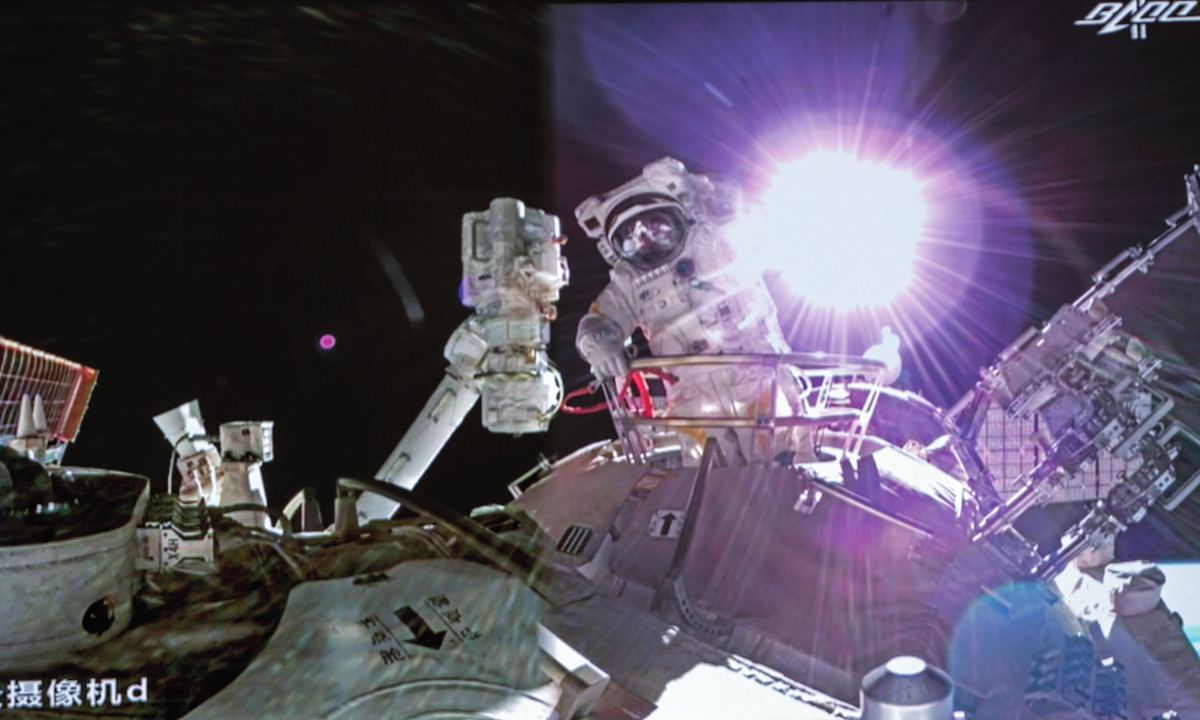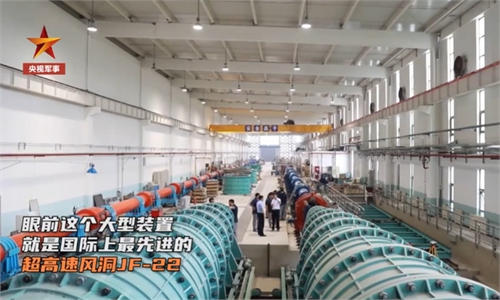New carrier rocket, Moon and Mars missions… lawmakers reveal China's forthcoming space programs

Shenzhou-13 taikonaut Ye Guangfu exits China's orbiting space station core module Tianhe on an extravehicular activity (EVA), the China Manned Space Agency said on December 26, 2021. Ye and fellow crew member Zhai Zhigang were conducting the second spacewalk of the Shenzhou-13 mission. Photo: Xinhua
What's the next step for the development of China's aerospace missions, political advisors and lawmakers working in the industry shared with the Global Times their vision and proposals to the ongoing two sessions, China's biggest annual political event.
"The development of China's new-generation manned launch vehicle has come to a key technological breakthrough and in-depth feasibility study stage, and the new model will support China to acquire the ability to land taikonauts on the Moon before 2030,'' Jiang Jie, chief designer of China's largest carrier rocket manufacturer China Academy of Launch Vehicle Technology (CALT), who is also a member of the 13th National Committee of the Chinese People's Political Consultative Conference (CPPCC), China's top political advisory body, told the Global Times on the sidelines of the two sessions.
According to Jiang, such capability would also lay the foundation for future lunar research and development as well as for deep-space exploration and the use of space resources.
Wu Weiren, chief designer of the country's lunar probe program and member of the Standing Committee of the CPPCC National Committee, revealed on Sunday that China also plans to retrieve samples from Mars by 2030 and explore the edge of the solar system.
"The sun is about 150 million kilometers away from Earth, which is one astronomical unit. We plan to achieve the goal of 'double 100' in 2049. That is, to complete 100 astronomical units, or 15 billion kilometers of travel in deep space, for the centenary of the founding of the People's Republic of China," Wu said.
Liu Zhirang, Party chief of the Sixth Academy of the state-owned aerospace giant the China Aerospace Science and Technology Corp (CASC) and deputy to the 13th National People's Congress (NPC), China's top legislature, said China should utilize the advantages of the state system to establish a special project for the development of world-class reusable liquid-propellant products.
Liu pointed out that compared with traditional rockets for single use, reusable launch vehicles could lower the cost for space transport, increase safety, and shorten the preparation period for launches. This development will be a crucial direction for China's future space transport system, he said.
However, all the liquid-fueled rockets in active service in China are for single use. Although China has conducted development work for liquid-propellant rocket engines, whose potential has been verified in several tests, there is still a long way to go before actual engineering application, Liu explained.
Concerning the much-anticipated construction of the China space station, Zhou Jianping, chief designer for China's manned space missions, who is also a member of the 13th National Committee of the CPPCC, said that China's space station is expected to host six astronauts of the Shenzhou-14 and Shenzhou-15 crews this year.
This year, China will launch two lab modules for the space station, two manned spacecraft, and two cargo spacecraft. The Shenzhou-14 crew will witness the arrival of two lab modules during their stay in orbit, said Zhou.
According to the plan, China will complete construction of its space station by the end of this year, marking the achievement of the 30 years of China's manned aerospace history.
Since going into space last October, the Shenzhou-13 crew has been in good condition. They will return to Earth in mid-April, completing the very first stage of the space station - the key technological verification stage, Yang Liwei, director of the China Manned Space Engineering Office and member of the National Committee of the CPPCC, said.
Speaking of international cooperation, Yang said that with the retirement of the International Space Station, the China space station will take on a more important role. "As always, we hold an open attitude toward international cooperation and welcome more countries to conduct research in space," he said.




